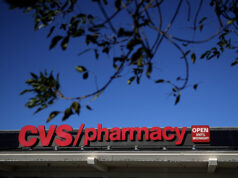
Remote patient monitoring implementation and reimbursement is a transformative development in healthcare. Although its robust adoption during the Covid-19 pandemic reflected the needs of the time, remote patient monitoring has many benefits that stand to make a significant difference in improving clinical practice workloads, chronic condition management, and the patient experience.
In a recent webinar sponsored by 100Plus, the health tech and medtech company provided a roadmap on how their program works, including device deployment, collaboration with clinicians to assess patient eligibility, as well as implementation and reimbursement.
Dr. Mintu Turakhia, a cardiac electrophysiologist, outcomes researcher, clinical trialist, and consulting head of medical at 100Plus, provided some background on the differences between the CMS program Chronic Condition Management and the more recent adoption of Remote Patient Monitoring.
CPT Code 99457 is a monthly billing code for Remote Patient Monitoring which reimburses providers for the direct expenses of remotely monitoring physiologic data while treating a patient. To qualify for reimbursement, clinicians and other healthcare professionals must provide at least 20 minutes of interactive patient care per calendar month. 100Plus facilitates interactive remote care with its patient clinician portal, making remote patient monitoring easy and accessible by bridging the gap between visits with consistent patient data.
Turakhia shared the findings of a clinical study by University of Pittsburgh Medical Center of patients with Type 2 diabetes who participated in a remote patient monitoring program with connected glucometers. The participants successfully reduced H1C levels.
He also highlighted a 100Plus study of 14,309 patients — 42% men and 58% women — who have Medicare. Topline results included a significant drop in blood pressure for patients with hypertension over 180 days and weight loss.
Turakhia also shared his outlook that although asynchronous care is here to stay, remote patient monitoring may change over time, as it adapts to the needs of practices and the government program’s evolution.
Mike Wurm, Director of Product and Strategy with 100Plus, provided an overview of how 100Plus helps practices onboard its RPM program. He pointed out that unlike many RPM programs that use Bluetooth, it chose to use SMS text/cellular data because no configuration is required since almost everyone has a phone that provides SMS texting. Wurm also noted that 100Plus can help determine which patients in a physician practice are eligible for RPM coverage.
Patients receive devices that can transmit cellular data. The devices can include a blood pressure cuff, digital scale, blood glucose monitor, pulse oximeter, and a digital thermometer., . It also plans to add a spirometer.
Patients interact with an engagement platform called Ava. The virtual, AI-based medical assistant prompts patients to use their devices to transmit physiologic data. The goal of the CMS RPM program is to provide a richer time series of clinical parameters upon which physicians can provision better preventive care to reduce reactive care such as hospitalizations and ER visits.
Nadia Ziyadeh-Hammad, RPM Coordinator, at Greenville Healthcare Associates, which uses 100Plus, noted that the large screen and fonts on the devices made them easier to use for senior patients.
She also related how an elderly patient who didn’t like to see the physician agreed to be monitored remotely and was helped by the platform. The physiologic data transmitted from the male patient’s devices indicated he had experienced some tachycardic events. When Nadia’s team followed up with the patients, he reported fatigue and chest pressure. They asked him to come in for an EKG and the data indicated the patient was close to having a cardiac event.
Although RPM has been available for 3 to 4 years, a new variation of the program, which CMS is currently piloting, is remote therapeutic monitoring, which focuses on pulmonary and musculoskeletal conditions. It includes five new RTM codes, all of which go live starting January 1, 2022.
National Law Review cited this hypothetical examples of how the final rule could work in practice:
An asthmatic patient is prescribed a rescue inhaler equipped with an FDA-approved medical device that monitors when the patient uses the inhaler, how many times during the day the patient uses the inhaler, how many puffs/doses the patient uses each time, and the pollen count and environmental factors that exist in the patient’s location at that time. This is non-physiologic data. The data is then used by the treating practitioner to assess the patient’s therapeutic response and adherence to the asthma treatment plan. This can enable the practitioner to better determine how well the patient is responding to the particular medication, what social or environmental factors affect the patient’s respiratory system status, and what changes could be made to improve the patient’s health.
In only two years, the RPM program has provided a gateway to wider adoption of virtual health tools. As we emerge from the pandemic with a greater comfort level for enlisting digital health tools in the care of patients with chronic conditions, it will be interesting to see how the CMS RPM program evolves and how 100Plus responds.
To download the full webinar, please fill out the form below:
Photo: Maria Symchych-Navrotska, Getty Images








